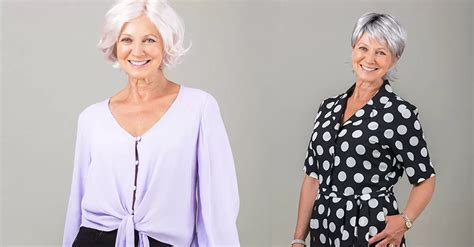With age comes an inevitable change in appearance, which can include thinning hair or hair loss. For many elderly women, wigs offer a convenient and stylish solution to these concerns. This comprehensive guide delves into the world of wigs for elderly women, providing valuable insights into their benefits, types, and considerations.

Benefits of Wigs for Elderly Women
Wigs offer numerous benefits for elderly women, including:
- Increased Confidence: A well-fitting and natural-looking wig can boost confidence and self-esteem.
- Hair Loss Concealment: Wigs effectively conceal hair loss due to age, medical treatments, or other factors.
- Versatility: Wigs allow for easy and versatile styling options, giving elderly women the freedom to change their look as desired.
- Protection from Elements: Wigs can provide protection from the sun, wind, and cold, especially for elderly women with sensitive scalps.
Types of Wigs for Elderly Women
There are various types of wigs available to suit the unique needs of elderly women:
- Synthetic Wigs: Made from artificial fibers, synthetic wigs are affordable and easy to care for.
- Human Hair Wigs: Made from real human hair, human hair wigs offer a natural and realistic appearance but require more maintenance.
- Partial Wigs: These wigs cover only a portion of the head, such as the top or sides, and integrate with existing hair.
- Full Wigs: Full wigs cover the entire head, providing complete coverage and a complete transformation.
Considerations for Elderly Women Choosing Wigs
When choosing a wig for elderly women, consider the following factors:
- Hair Type and Texture: Match the wig to your natural hair type and texture for a seamless look.
- Skin Tone: Choose a wig that complements your skin tone to avoid a mismatch.
- Face Shape: Consider your face shape and choose a wig that frames it appropriately.
- Comfort and Fit: Ensure the wig fits comfortably and securely on your head.
- Maintenance: Consider the maintenance requirements of the wig, including frequency of washing and styling.
How to Choose the Right Wig for Elderly Women
Follow these steps to choose the ideal wig for elderly women:
- Determine Your Needs: Identify your specific reasons for wanting a wig, such as hair loss concealment or confidence enhancement.
- Research Different Types: Explore the different types of wigs and their pros and cons.
- Consult an Expert: Consider seeking professional advice from a hair stylist or wig specialist.
- Try on Different Options: Experiment with various wigs to find the most comfortable and flattering fit.
- Care for Your Wig: Learn the proper care and maintenance techniques for your chosen wig to prolong its life and maintain its beauty.
Pros and Cons of Wigs for Elderly Women
Pros:
- Improved Confidence and Self-Esteem
- Concealment of Hair Loss
- Versatile Styling Options
- Protection from Elements
Cons:
- Can Be Expensive
- Require Maintenance
- May Not Feel as Natural as Real Hair
- Can Be Uncomfortable in Hot or Humid Weather
Conclusion
Wigs for elderly women offer a valuable tool for concealing hair loss, enhancing confidence, and achieving a desired look. By understanding the benefits, types, and considerations involved, elderly women can make informed decisions about choosing and using wigs. With proper care and maintenance, a well-fitting wig can become an integral part of an elderly woman’s wardrobe, providing comfort, versatility, and a renewed sense of vitality.
Additional Information
Table 1: Types of Wigs and Their Features
| Type of Wig | Materials | Maintenance | Cost |
|---|---|---|---|
| Synthetic | Artificial fibers | Easy and affordable | Lower |
| Human Hair | Real human hair | More time-consuming and costly | Higher |
| Partial | Covers only a portion of the head | Less maintenance | Varies |
| Full | Covers the entire head | Most maintenance | Highest |
Table 2: Considerations for Elderly Women Choosing Wigs
| Factor | Importance | Recommendations |
|---|---|---|
| Hair Type and Texture | Natural match | Choose a wig with similar texture and style to your natural hair. |
| Skin Tone | Complementation | Select a wig that complements your skin tone to avoid a mismatch. |
| Face Shape | Framing | Consider your face shape and choose a wig that flatters it. |
| Comfort and Fit | Secure and comfortable | Ensure the wig fits securely and comfortably on your head. |
| Maintenance | Requirements and costs | Choose a wig that aligns with your maintenance preferences and budget. |
Table 3: Benefits of Wigs for Elderly Women
| Benefit | Importance | Examples |
|---|---|---|
| Increased Confidence | Enhanced self-esteem | Feeling more confident in social situations. |
| Hair Loss Concealment | Full coverage | Hiding hair loss due to age or medical treatments. |
| Versatility | Styling options | Easily changing hairstyles to match different occasions or moods. |
| Protection from Elements | Scalp protection | Providing shade from the sun or warmth in cold weather. |
Table 4: Pros and Cons of Wigs for Elderly Women
| Advantage | Disadvantage | Mitigation Strategies |
|---|---|---|
| Improved Confidence | Expense | Explore affordable options such as synthetic wigs or partial wigs. |
| Hair Loss Concealment | Maintenance | Follow the recommended cleaning and care instructions for the specific wig type. |
| Versatile Styling Options | Lack of Natural Feel | Consider human hair wigs or blended wigs for a more realistic appearance. |
| Protection from Elements | Discomfort in Warm Weather | Choose wigs with breathable materials or lightweight construction for hot climates. |
